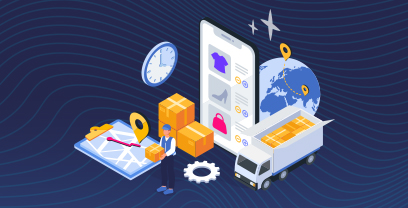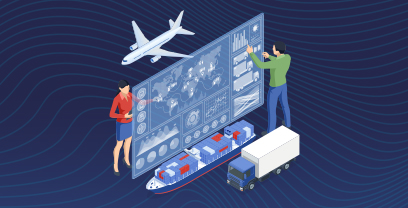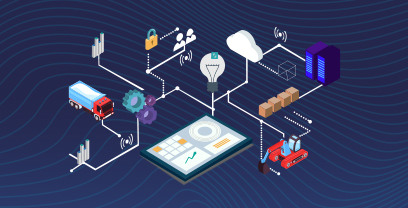Supplier onboarding is a critical component of procurement and supply chain management, setting the foundation for strong, productive partnerships. This step ensures that new suppliers meet company standards, align with business objectives, and comply with regulatory requirements.
Recent data shows that 91% of industry leaders recognize suppliers as a valuable source of strategic advantage, and 70% of procurement professionals surveyed by Forrester highlight innovation as the top opportunity in supplier collaboration. Effective onboarding is crucial to unlock these benefits, laying the foundation for a long-term, mutually beneficial relationship that maximizes supplier value.
In this blog, we’ll explore the importance of supplier onboarding and offer best practices for creating a winning vendor onboarding strategy.
What Is Supplier Onboarding?
Supplier onboarding is the process of getting a new supplier set up and approved in a company’s procurement system. It involves collecting and checking all the necessary information about the supplier, including company details, financials, compliance documents, and terms of service, and making sure the supplier meets the company’s standards aas well as regulatory requirements.
The time it takes to onboard a supplier can vary. It can be as quick as a few hours or stretch out to several days, depending on the complexity of what’s being supplied, industry regulations, and the company’s internal processes. The duration can also depend on how quickly the supplier provides the needed information and the thoroughness of the vetting process.
Supplier Onboarding Vs. Supplier Performance Management
Supplier Onboarding and Supplier Performance Management are different stages in working with suppliers:
- Supplier Onboarding focuses on gathering information, verifying qualifications, and setting up the basics for working together. The main goal here is to ensure the supplier is qualified and compliant before any business begins.
- Supplier Performance Management involves keeping an eye on how well the supplier is performing, using metrics like quality, delivery times, costs, and compliance. The focus is on making sure the supplier continues to meet your standards and improving the partnership over time.
While supplier onboarding is about getting started with a new supplier, supplier performance management is about maintaining and improving the relationship over the long-term.
Learn more in our blog post, “Supplier Enablement: How to Empower Suppliers for Mutual Growth.”
The Importance of an Effective Supplier Onboarding Process
As a crucial initial step in the broader Supplier Lifecycle Management (SLM) process, effective supplier onboarding creates the foundation for a successful partnership. This step ensures that all necessary information, compliance checks, and agreements are in place before the supplier begins providing goods or services.
The onboarding stage is pivotal as it determines the quality, reliability, and risk associated with the suppliers the business engages with, and sets the tone for future interactions.
Effective supplier onboarding helps organizations:
- Streamline Procurement and Supply Chain: Ensuring that all suppliers are vetted and approved in advance minimizes delays when new products or services are needed. The business can quickly and confidently engage with pre-approved suppliers. By establishing clear processes and expectations from the outset, onboarding also helps avoid misunderstandings and or issues down the line.
- Enhance Supplier Relationships and Communication: A well-structured onboarding process provides a clear understanding of expectations, roles, and responsibilities, which helps in building trust and transparency. Good communication channels make it easier to address issues and collaborate on solutions.
- Ensure Compliance and Risk Management: By thoroughly vetting suppliers for compliance with legal, regulatory, and ethical standards, companies can mitigate potential risks such as legal liabilities, reputational damage, and supply chain disruptions. The onboarding process allows businesses to assess the financial stability and operational capabilities of suppliers, ensuring they can meet the company’s standards and requirements.
According to a Forrester survey of 462 procurement leaders at the director level and above at organizations across the globe, most organizations are formalizing supplier management. Procurement leaders are increasingly collaborating with suppliers, not only to monitor progress and achieve shared goals but also to provide greater flexibility in meeting requirements and foster innovation.
However, Forrester found that only 13% of organizations are considered Leaders, characterized by having formal programs that include detailed improvement plans, sharing company strategies with suppliers, and actively managing data and forecasts.
Learn more in Forrester’s report on why holistic supplier management is key to business success.
Key Steps in the Supplier Onboarding Process
Supplier onboarding is a multi-step process, and each step is crucial for ensuring that the supplier is qualified, compliant, and capable of meeting the company’s needs. Let’s dive into the five key steps:
1. Preliminary Research and Risk Assessment: The first step involves understanding the prospective supplier’s background, financial stability, reputation, and the scope of products or services they offer. Activities include:
- Conducting preliminary due diligence, such as background checks and financial risk assessments.
- Evaluating potential geopolitical, financial, and operational risks.
- Assessing the supplier’s fit with the company’s requirements and standards.
At the end of this step, you should have a preliminary risk profile of the supplier, which helps decide whether to proceed with the onboarding process.
2. Compliance and Documentation Collection: The second step is to ensure that the supplier meets all regulatory, legal, and company-specific requirements. This includes:
- Collecting necessary documents such as business licenses, certifications, tax information, and insurance policies.
- Verifying compliance with industry standards and regulations.
- Gathering data protection and cybersecurity policies, if relevant.
The outcome of this step is a comprehensive set of verified documents that demonstrate the supplier’s compliance and legal standing.
3. Supplier Evaluation and Approval: The evaluation and approval process is where you assess the supplier’s capabilities, quality standards, and overall capability to meet the company’s needs, including:
- Evaluating the supplier’s production capabilities, quality control processes, and past performance.
- Conducting site visits or audits, if necessary.
- Reviewing supplier references and past work to ensure quality and reliability.
Once you have completed these activities, you can either approve or reject the supplier based on the evaluation findings.
4. Contract Negotiation and Finalization: Step four establishes clear terms and conditions for the business relationship, including :
- Negotiating the terms of the contract, including payment terms, delivery schedules, and quality standards.
- Finalizing legal agreements, such as non-disclosure agreements (NDAs), service level agreements (SLAs), and master service agreements (MSAs).
- Ensuring that both parties agree to all terms and conditions and the code of conduct.
At the end of this step, you should have a contract signed by both parties that formalizes the business relationship and confirms all agreed-upon terms and conditions.
5. Integration into Supplier Management System: The objective in this step is to seamlessly integrate the new supplier into the company’s procurement and supplier management systems. This includes:
- Entering supplier contact information.
- Setting up payment systems and processes for order placement, tracking, and invoicing.
- Providing the supplier with access to relevant tools, vendor portals, and communication channels.
Once these steps are finalized, the supplier can start fulfilling orders and actively contribute to the supply chain.
Best Practices for Onboarding Suppliers
As you implement supplier onboarding strategies and tools, you should consider these best practices:
Establish Clear Criteria for Supplier Selection: It’s important to define standard criteria like financial stability, regulatory compliance, quality, production capacity, and ethics to ensure suppliers align with your goals. This helps streamline decision-making and minimize risks.
Use Standardized Onboarding Procedures: Implementing consistent onboarding steps, like checklists and due diligence, ensures fairness and efficiency, reducing the risk of errors or bias.
Maintain Open Communication Channels: Clear and ongoing communication with suppliers builds trust and improves collaboration. Set expectations and provide contacts to resolve issues quickly, enhancing business relationships.
Regularly Review and Update Supplier Information: Keep supplier data, such as compliance and certifications, up-to-date to ensure accuracy and mitigate risks, supporting better decision-making and monitoring.
Implement Technology Solutions: Use tools like supplier onboarding software and automated compliance checks to streamline data handling and communication, improve efficiency, and reduce manual errors. These tools should seamlessly integrate with existing systems for comprehensive data and information management. Choose solutions that are intuitive and easy to use for both sides to maximize adoption.
These best practices help to minimize risks and enhance operational efficiency, and to foster strong, collaborative relationships with suppliers.
Download Ivalua’s best practices checklist for supplier relationship management.
Overcoming Challenges in Supplier Onboarding
For effective supplier onboarding, there are numerous pitfalls to avoid. Let’s take a look at some of the biggest challenges and tips for tackling them.
Data Inconsistency
Inconsistent or inaccurate data from suppliers can lead to misunderstandings, errors, and inefficiencies in the onboarding process. This includes discrepancies in provided documents, mismatches in product specifications, or varying standards of quality control.
Tip: Implement a centralized supplier data management system to standardize and validate all incoming data. This system can include data validation rules and automated checks to ensure consistency and accuracy, reducing the risk of discrepancies and errors.
Compliance Risks
Ensuring that suppliers meet all legal requirements and industry standards can be complex, especially when dealing with international suppliers or those in highly regulated industries. Non-compliance can result in legal liabilities, financial penalties, and damage to the company’s reputation.
Tip: Use compliance management software to automatically track and verify supplier compliance with relevant legal and industry standards. This software can also provide alerts for any changes in regulations, helping to ensure continuous compliance.
Our comprehensive Supplier Risk and Performance Management Checklist helps your organization in determining the attributes of an effective supplier risk and performance management (SRPM) program.
Communication Barriers
Poor communication between procurement and supply chain teams or suppliers can lead to delays, misinterpretations, and unmet expectations. This is especially problematic when key information is not effectively shared, or when there are cultural and language differences.
Tip: Establish clear communication protocols and leverage collaborative tools that support real-time communication and document sharing. Providing a dedicated point of contact within the procurement team can also facilitate better and more consistent communication with suppliers.
Integration Difficulties
Managing large volumes of suppliers and their information can be overwhelming, particularly when integrating this data into multiple systems. This can lead to information silos, difficulties in data retrieval, and challenges in maintaining an up-to-date supplier database.
Tip: Adopt an integrated supplier management platform that consolidates all supplier information as a single source of truth and interfaces seamlessly with other enterprise systems. This integration ensures easy access to up-to-date supplier data across different departments and systems.
Watch this webinar to learn why holistic supplier management solutions are more important than ever before.
Manual Processes
Reliance on manual processes, such as paper-based documentation and manual data entry can delay onboarding and lead to duplicate information or errors.
Tip: Automate workflows for tasks such as data entry, document processing, and approvals, and use digital forms and electronic signatures to replace paper-based processes.
Ivalua can help you leverage project management tools to establish detailed project plans, assign tasks to suppliers and stakeholders, and track their progress.
Read our datasheet to learn how supplier management software can power procurement processes, establish resiliency, and drive innovation.
Case Study: Chassis Brakes
Chassis Brakes International, a global player in automotive braking solutions, faced challenges in maintaining accurate supplier master data and lacked standardized processes for managing purchase requisitions and order. These issues hindered the procurement team’s ability to track spend and deliver added value.
Working with Ivalua, Chassis Brakes cut their supplier base by more than half while achieving:
- 5% reduction in direct spend and about 10% reduction in indirect spend
- 98% of spend analyzed
- 99% purchase order coverage
- 100% visibility into all procurement contracts
Ivalua’s solution also allowed them to implement mobile approvals for purchase requests and orders.
According to Cyrille Naux, VP of Strategy, Operations and Procurement at Chassis Brakes, “Ivalua has enabled our transformation journey effectively, making Procurement more agile and digital. It really began with a focus on suppliers and clean supplier master data to make better decisions. Resolving this empowered efficiency, visibility and much more value creation for the business.”
Read the full Chassis Brakes International case study to find out how they achieved making procurement more agile and digital.
Benefits of Ivalua’s Supplier Management Solution
Ivalua’s Supplier management software is a comprehensive suite of tools designed to streamline and optimize the supplier onboarding process. It provides a centralized platform where organizations can manage all aspects of supplier relationships, from initial onboarding to ongoing performance management. ey benefits include:
- Improved Efficiency: Ivalua’s supplier management solutions automate many aspects of the onboarding process, reducing the manual workload and accelerating onboarding. Procurement teams can focus on strategic sourcing activities rather than administrative tasks, while making sure that suppliers are onboarded quickly and effectively.
- Enhanced Compliance: Ivalua’s solutions include robust compliance management features that automatically verify supplier information against relevant standards and regulations. This helps organizations avoid legal liabilities, financial penalties, and reputational damage.
- Better Communication: Ivalua’s centralized communication tools support real-time collaboration between procurement teams and suppliers with messaging systems, document sharing, and notifications. These features help to prevent misunderstandings and improve coordination throughout the onboarding process.
- Increased Transparency: Ivalua offers comprehensive visibility into the entire supplier onboarding process – from initial assessments to final approvals – with detailed tracking and reporting features. Organizations can monitor progress, assess supplier performance, and maintain accurate records, enabling transparency that builds trust with suppliers and supports better decision-making.
Watch a demo of Ivalua’s Supplier Management Software.
Conclusion
A robust supplier onboarding process is crucial for building strong, compliant, and efficient supplier relationships. It ensures suppliers meet required standards and are seamlessly integrated into organizational systems, laying the groundwork for successful partnerships.
By prioritizing effective onboarding through powerful supplier management solutions, companies can achieve cost savings, enhance supplier performance, and gain a competitive edge in the marketplace.
Learn how to master supplier onboarding in our supplier management demo.




